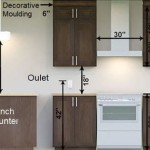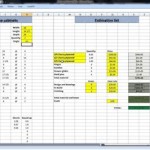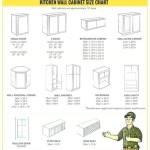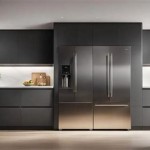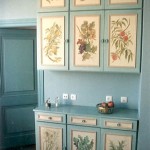How To Fix A Squeaky Kitchen Drawer
A squeaky kitchen drawer can be a persistent annoyance. Fortunately, in most cases, the fix is simple and requires minimal tools. This article outlines several methods for silencing that irritating squeak, ranging from simple lubrication to more involved repairs.
Identifying the Source of the Squeak
Before attempting any fix, it's crucial to pinpoint the source of the squeak. This will guide the repair process and ensure effectiveness. Open and close the drawer slowly, listening carefully and observing the drawer's movement. Common squeak sources include:
- Drawer slides: The metal or plastic tracks on which the drawer runs are the most frequent culprits.
- Drawer box contact points: The drawer box itself may be rubbing against the cabinet frame.
- Loose screws: Loose screws on the drawer slides or drawer box can cause noise and instability.
1. Lubrication: The First Line of Defense
Lubrication is often the easiest and most effective solution for a squeaky drawer. Applying a suitable lubricant to the drawer slides can significantly reduce friction and eliminate the noise.
- Choose the right lubricant: A silicone-based lubricant or paraffin wax is ideal for drawer slides. Avoid using WD-40 or other oil-based lubricants, as these can attract dust and dirt, leading to further problems down the line.
- Apply the lubricant: Extend the drawer fully and locate the drawer slides. Apply the lubricant to the slide rails, paying particular attention to any areas showing signs of wear or friction. Wipe away any excess lubricant.
- Test the drawer: Open and close the drawer several times to distribute the lubricant and evaluate the effectiveness. Reapply as needed.
2. Tightening Loose Screws
Loose screws on the drawer slides or the drawer box itself can contribute to squeaking. Checking for loose screws is a simple step that can often resolve the issue.
- Inspect the drawer slides: Extend the drawer fully and inspect the screws attaching the slides to the drawer and the cabinet. Tighten any loose screws with a screwdriver.
- Check the drawer box: Inspect the screws that secure the drawer front and back to the drawer sides. Tighten any loose screws.
3. Addressing Drawer Box Contact Points
If the drawer box is rubbing against the cabinet frame, it can create a squeaking noise. Padding the contact points can reduce friction and silence the squeak.
- Identify contact points: Open and close the drawer slowly to determine where the drawer box is making contact with the cabinet frame.
- Apply padding: Use self-adhesive felt pads, adhesive-backed foam tape, or even small pieces of cardboard to cushion the contact points. Place the padding on the drawer box where it rubs against the cabinet.
4. Cleaning and Debris Removal
Sometimes, built-up dirt, dust, or debris on the drawer slides can cause friction and squeaking. Cleaning the slides can improve their function and reduce noise.
- Remove the drawer: Fully extend the drawer and, if possible, remove it from the cabinet. This will provide better access to the slides for cleaning.
- Clean the slides: Use a damp cloth or a vacuum cleaner with a brush attachment to remove any loose debris from the drawer slides. A mild cleaning solution can be used for stubborn dirt.
- Dry thoroughly: Ensure the slides are completely dry before reinstalling the drawer.
5. Replacing Worn Drawer Slides
If the drawer slides are significantly worn or damaged, replacing them may be the best solution. Over time, the plastic or metal components of the slides can wear down, leading to increased friction and noise.
- Purchase replacement slides: Measure the length and type of the existing slides to ensure you purchase the correct replacements. Replacement slides can typically be found at hardware stores.
- Remove the old slides: Unscrew the old slides from the drawer and the cabinet.
- Install the new slides: Attach the new slides to the drawer and the cabinet, ensuring they are securely fastened.
6. Applying Dry Lubricant: An Alternative to Liquid Lubricants
Dry lubricants like graphite or Teflon powder offer a long-lasting solution for squeaky drawers. They create a slippery surface that reduces friction without attracting dust and dirt.
- Apply the dry lubricant: Apply a small amount of dry lubricant to the drawer slides. A small brush can be helpful for application.
- Distribute the lubricant: Open and close the drawer several times to distribute the dry lubricant evenly along the slides.
7. Seeking Professional Help
If the squeak persists despite trying these methods, or if the drawer is significantly damaged, it's recommended to consult a professional handyman or furniture repair specialist. They can diagnose the issue accurately and provide effective solutions.

How To Fix Squeaky Kitchen Drawers

How To Fix Squeaky Kitchen Drawers Ehow

Fixing Drawers How To Make Creaky Glide Diy

Spray Wd 40 On Drawer Slides

Quick Tips How To Stop Wooden Drawers From Creaking

How To Fix A Kitchen Drawer Slide That Does Not Close All The Way Ehow

Fix A Sticking Drawer 3 Ways Stop From Squeaking How To Squeaky

Fixing Squeaky Or Sticky Cabinet Door And Drawers Trends Wood Finishing

Drawer Won T Stay Closed 3 Simple Ways You Can Make It Tight Again Knockoffdecor Com

Quick Tips How To Stop Wooden Drawers From Creaking
Related Posts

